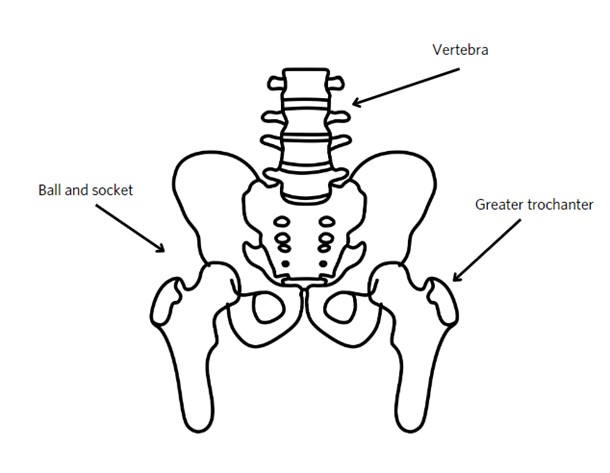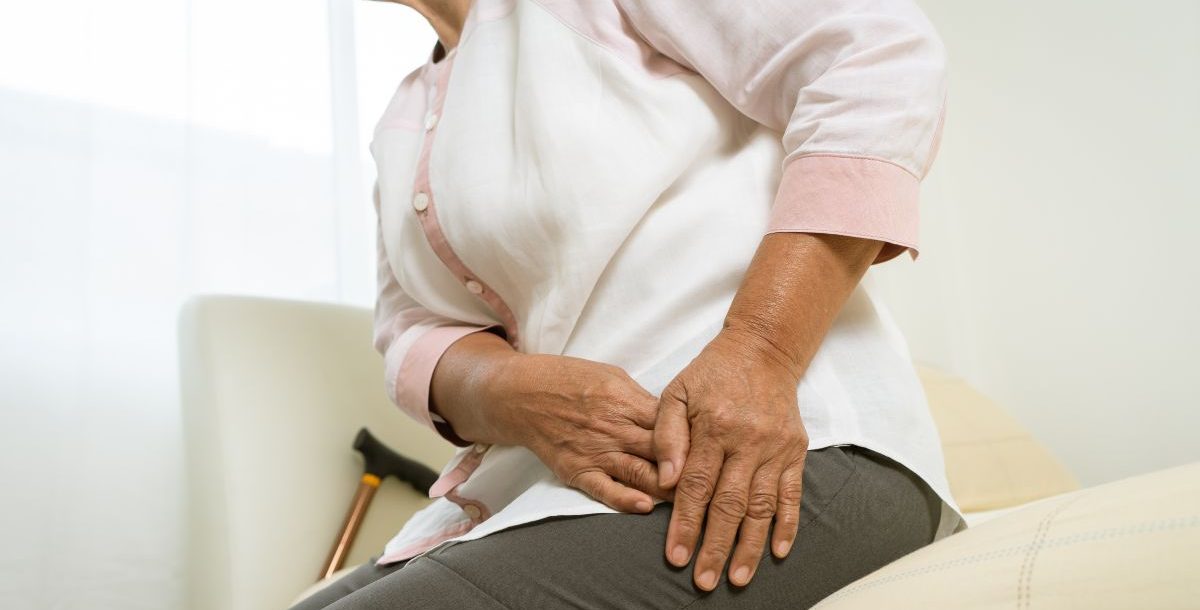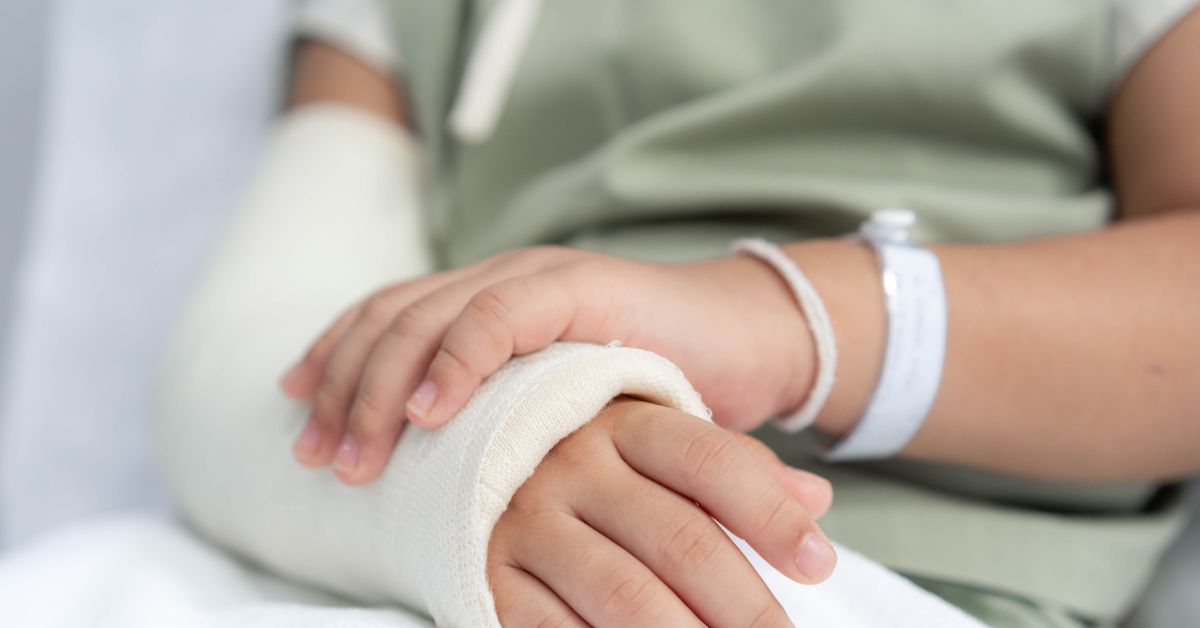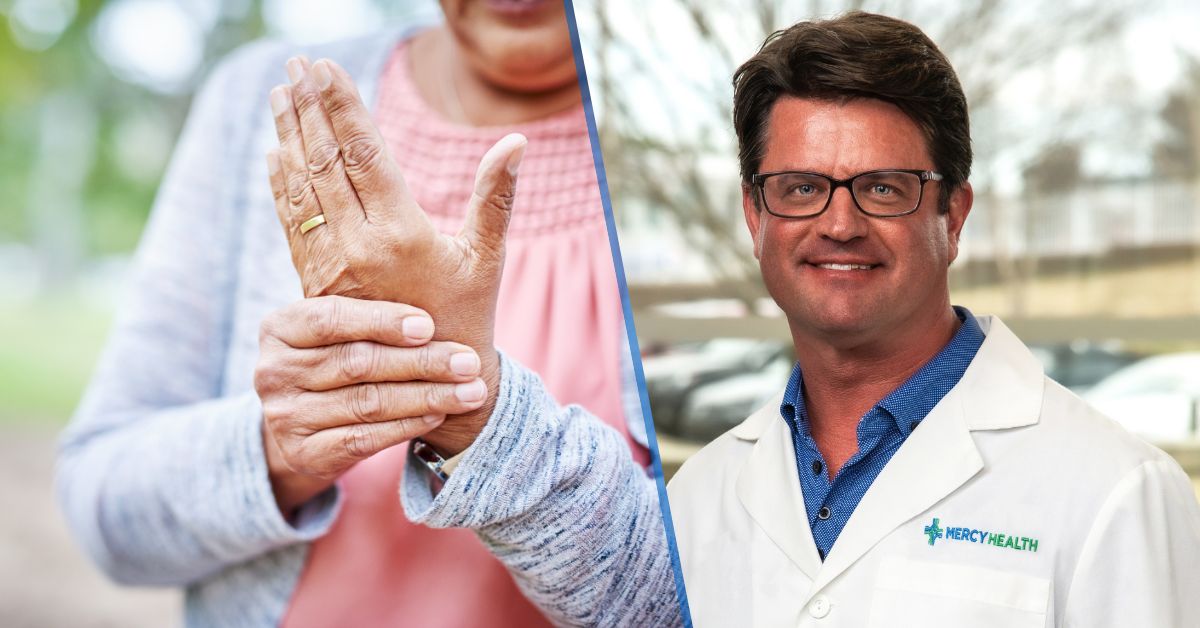What causes pain in hips?
First of all, hip pain is a common ailment that can affect individuals of all ages and lifestyles. Whether the pain includes a dull ache, sharp pain or discomfort during movement, hip pain can significantly impact daily activities and quality of life.
Understanding the common causes and effective management strategies is crucial for finding relief and preventing further complications. To better understand these conditions, as well as what causes pain in hips, a basic anatomy lesson is helpful.

The bony bricks on the lower back, called vertebrae, join the top of the bony pelvis just above the buttocks. Toward the bottom and front of the bony pelvis, on either side, is a spherical bony depression, or hip socket. Each socket accepts the ball on the top end of the thigh bones at the lower end of the hip bones.
Just below the hip joint is a bony knob that extends off the side of the thigh bone called the greater trochanter. This trochanter is a key point of attachment for muscles originating from the pelvis. In addition to the bony anatomy, there are important soft tissues around the hip.
Many muscles connect and cross from the lower back to the pelvis and down past the hip to the thigh bone. Major nerves and arteries also cross this area and the pelvis holds major organs, such as the intestines and bladder.
Common causes of hip pain
- Osteoarthritis: Osteoarthritis, also known as degenerative joint disease, is a common cause of hip pain in adults, especially older ones. It occurs when the cartilage that coats the ball and socket breaks down over time, leading to pain, stiffness and reduced range of motion in the hip joint.
- Bursitis: Tightness and fraying of the muscle tendons that attach to the trochanter can cause pain, sensitivity or tenderness on the side of the hip.
- Tendinitis: Tendinitis occurs when the tendons, which are thick cords that attach muscles to bones, become inflamed or irritated. Overuse, sudden movements or injury can lead to tendinitis in the hip, causing pain, stiffness and difficulty with movement.
- Hip fractures: Hip fractures are a serious injury, often resulting from falls or trauma, particularly in older adults with weakened bones. Fractures can cause severe hip pain, swelling and bruising, make it difficult to bear weight and impact your ability to walk on the affected leg.
- Muscle strains: Straining or overstretching the muscles around the hip joint can cause pain, stiffness and limited mobility. This can occur during physical activities, sports or even simple movements, like bending or lifting incorrectly.
What are the management and treatment options for hip pain?
- Rest: Resting the hip joint can help reduce pain and inflammation, especially during flare-ups of conditions like bursitis or tendinitis. Avoiding activities that aggravate the hip pain is essential for allowing long-term healing of the affected tissues.
- Ice and heat therapy: Applying ice packs or heat pads to the hip can help alleviate pain and reduce inflammation. The type of hip pain depends on whether to use cold or hot. Cold therapy is beneficial for acute injuries or flare-ups, while heat therapy can help relax tight muscles and improve circulation for chronic hip pain.
- Physical therapy: A tailored physical therapy program can strengthen the muscles around the hip joint, improve flexibility and correct posture and movement patterns. Physical therapists can also provide guidance on proper strengthening and stretching exercises to alleviate hip pain and prevent future injuries.
- Medications: Over-the-counter anti-inflammatory medications, such as ibuprofen or acetaminophen, can help reduce hip pain. In some cases, prescription medications or corticosteroid injections may be recommended for more severe or persistent pain.
- Lifestyle modifications: Making lifestyle changes, such as maintaining a healthy weight, avoiding high-impact activities that stress the hip joint and using assistive devices, like canes or walkers, can help alleviate hip pain and prevent further damage.
- Surgical intervention: In cases where conservative treatments fail to provide relief, surgery may be necessary to repair damaged soft tissues, replace the hip joint or address underlying conditions such as osteoarthritis or fractures. This can include a partial hip replacement surgery or a total hip replacement.
So, what causes pain in hips? Well, there are a lot of different causes to consider when addressing hip pain, and just as many management and treatment options as well. Therefore, it is important to meet with a health care provider to get an accurate diagnosis and personalized treatment plan tailored to your individual needs and preferences.
Learn about the hip care services as well as the sports medicine and orthopedics services we provide at Mercy Health.






